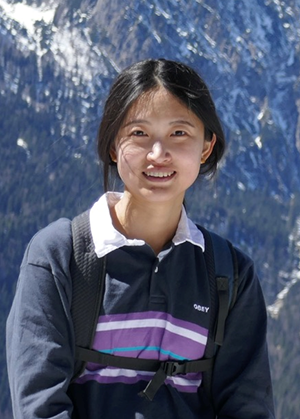USTC Astronomy Seminar Series: 2024 Fall
The Hot Circumgalactic Medium in the eROSITA All-Sky Survey
张艺 博士
Max-Planck-Institute for extraterrestrial Physics
2024/09/5, 2:30pm , the 19th-floor Observatory Hall

报告人:
Yi Zhang is a third-year PHD student at the Max Planck Institute for Extraterrestrial Physics (MPE) in Germany. She works on the eROSITA data and explore the hot circumgalactic medium around galaxies. Before coming to MPE, she studied at Nanjing University and worked on the cosmic-ray transport models.摘要:
Studying the distribution and properties of hot gas around galaxies (hot CGM) helps constrain the galaxy evolution models and the bi-modality of the galaxy population, but its observation is challenging. The first four Spectrum Roentgen Gamma (SRG)/eROSITA all-sky surveys (eRASS:4) allow us to study the hot CGM with a large sample of galaxies and measure a general relationship between the hot CGM and galaxy properties, i.e., stellar mass and halo mass. Using the latest self-calibrated halo-based group finding algorithm applied to the SDSS Main galaxy sample (MGS), we build the central galaxy sample containing 85,222 galaxies with 10<logM*<11.5 and 125,521 galaxies with 11.5<M_200m<14.0. We stack the X-ray emission around galaxies, mask the detected X-ray point sources, and carefully model the X-ray emission from the unresolved active galactic nuclei (AGN) and X-ray binaries (XRB) to obtain the X-ray emission from the hot CGM. We detect extended hot CGM to the virial radius around MW-mass and more massive galaxies. The X-ray surface brightness profile of the hot CGM can be described with the beta model with beta\approx0.4. We estimate the baryon budget of the hot CGM and obtain a value lower than the Lambda CDM cosmology predicted. The relationship between the X-ray luminosity of hot CGM and the stellar mass of the galaxy is measured down to logM*=10. The relationship between the X-ray luminosity of hot CGM and the halo mass can be fitted in a power law with an index of about 1.3 within 11.5<M_200m<14.0. We find brighter hot CGM around quiescent galaxies than star-forming galaxies. Our results constitute a new benchmark for galaxy evolution models and feedback processes. 邮编:230026 ,
邮编:230026 ,  联系电话: 0551-63601861
联系电话: 0551-63601861 Email:
Email: